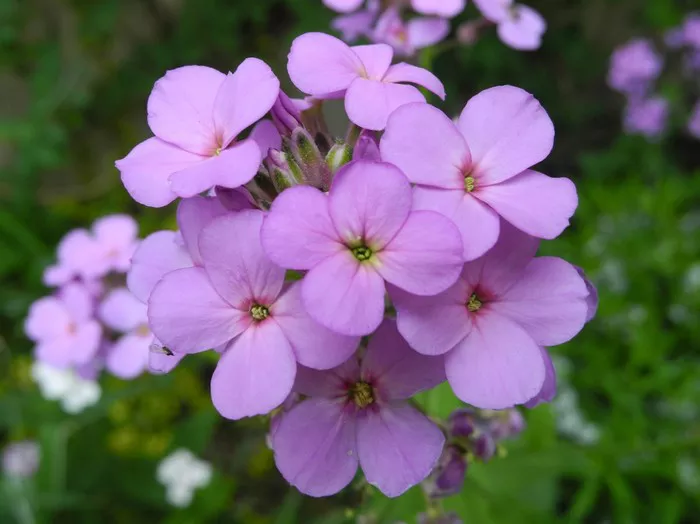Flowers and their intricate relationships with pollinators have fascinated scientists and nature enthusiasts alike for centuries. Among the myriad of pollinators, moths stand out as vital contributors to plant reproduction, yet their preferences in floral selection are often overlooked compared to bees and butterflies. Understanding what flowers moths are attracted to is crucial not only for enriching our knowledge of ecological interactions but also for guiding conservation efforts and promoting biodiversity. In this article, we delve into the fascinating world of moth-flower interactions, exploring the factors that influence moth preferences and highlighting some of the flowers that moths find most appealing.
The Enigmatic World of Moths and Flowers
Moths, belonging to the order Lepidoptera, comprise a diverse group of insects characterized by their nocturnal habits and distinctive antennae. While often overshadowed by their diurnal counterparts, such as butterflies, moths play a significant role in pollination, particularly during the night when many flowers remain open and ready for visitation. Unlike bees, which are guided primarily by sight, moths rely heavily on their acute sense of smell to locate suitable nectar sources. This olfactory prowess allows them to navigate through the darkness with precision, homing in on the fragrant signals emitted by flowers.
Factors Influencing Moth Floral Preferences
Several factors influence the floral preferences of moths, shaping the intricate dance between these insects and their botanical partners. One critical factor is scent, as moths are highly responsive to the chemical compounds emitted by flowers. Floral scents, often composed of volatile organic compounds (VOCs), serve as long-distance attractants, guiding moths to potential food sources. Additionally, the shape and structure of flowers play a significant role, as moths require access to nectar with their specialized mouthparts, which can vary depending on species.
The Role of Flower Color and Morphology
Contrary to popular belief, moths are not exclusively attracted to white or pale-colored flowers. While it’s true that many nocturnal flowers exhibit lighter hues to enhance visibility in low-light conditions, moths show a remarkable diversity in their floral preferences. Some species, such as hawkmoths, are known to favor tubular flowers with long corolla tubes, allowing them to access nectar while hovering in flight. Others, like silk moths, may prefer flowers with a broader landing platform, facilitating their feeding behavior.
Common Flowers Attracting Moths
1. Nicotiana spp. (Tobacco Plants): Known for their intensely fragrant blossoms, tobacco plants are popular among nocturnal pollinators, including moths. The tubular shape of their flowers accommodates the long proboscis of hawkmoths, making them ideal for these agile flyers. Furthermore, the high nectar content of Nicotiana flowers provides a rich energy source for moths during their nocturnal foraging expeditions.
2. Hesperis matronalis (Dame’s Rocket): This biennial or perennial herb is prized for its clusters of fragrant, lavender-colored flowers, which emit a sweet scent that attracts a variety of nocturnal pollinators, including moths. Dame’s Rocket blooms profusely in late spring to early summer, making it a valuable resource for moths during their active periods.
3. Lonicera spp. (Honeysuckles): With their tubular, often fragrant flowers, honeysuckles are a favorite among moths seeking nectar. These vines produce an abundance of blooms, each offering a rich reward for their nocturnal visitors. The sweet aroma of honeysuckle flowers serves as a beacon for moths, guiding them to this plentiful food source under the cover of darkness.
4. Syringa vulgaris (Lilac): Renowned for its exquisite fragrance and delicate blossoms, the lilac is a magnet for moths in search of nectar. The pale purple or white flowers of the lilac emit a strong, sweet scent that lures moths from afar. As one of the early bloomers of spring, lilacs provide a vital food source for moths emerging from hibernation, helping sustain them through the season.
5. Clethra alnifolia (Sweet Pepperbush): This native shrub boasts clusters of tiny, white flowers that exude a delightful fragrance, particularly in the evening. Sweet pepperbush, also known as summersweet, attracts a variety of nocturnal pollinators, including moths and noctuid moths. Its abundant nectar reserves make it a valuable resource for these insects during the summer months.
Conclusion
While moths may not receive as much attention as their diurnal counterparts, their importance as pollinators cannot be overstated. By understanding the floral preferences of moths, we gain valuable insights into the intricate web of ecological interactions that sustain our ecosystems. From the fragrant blooms of tobacco plants to the delicate petals of lilacs, the flowers that moths favor are as diverse as the moths themselves. By promoting the conservation of these floral resources, we can ensure the continued survival of these vital pollinators for generations to come.


